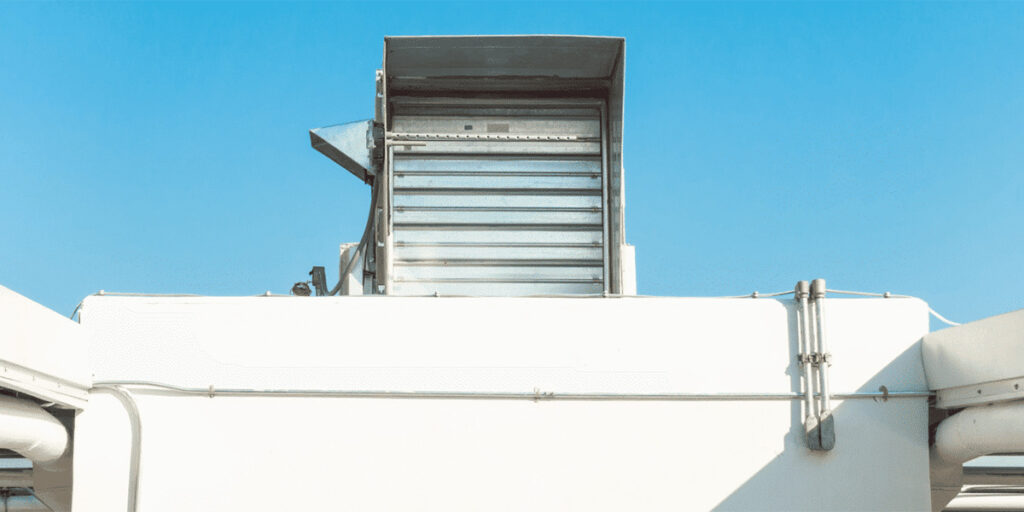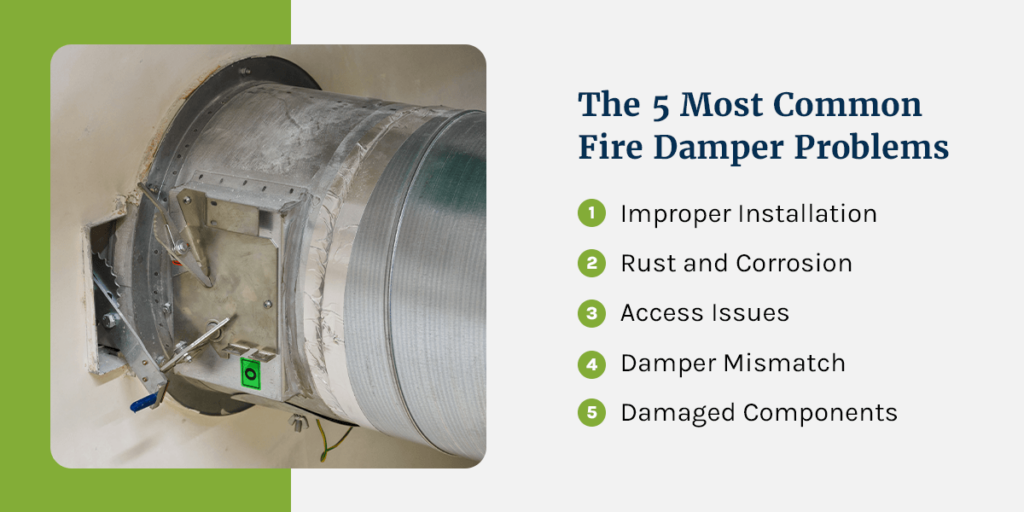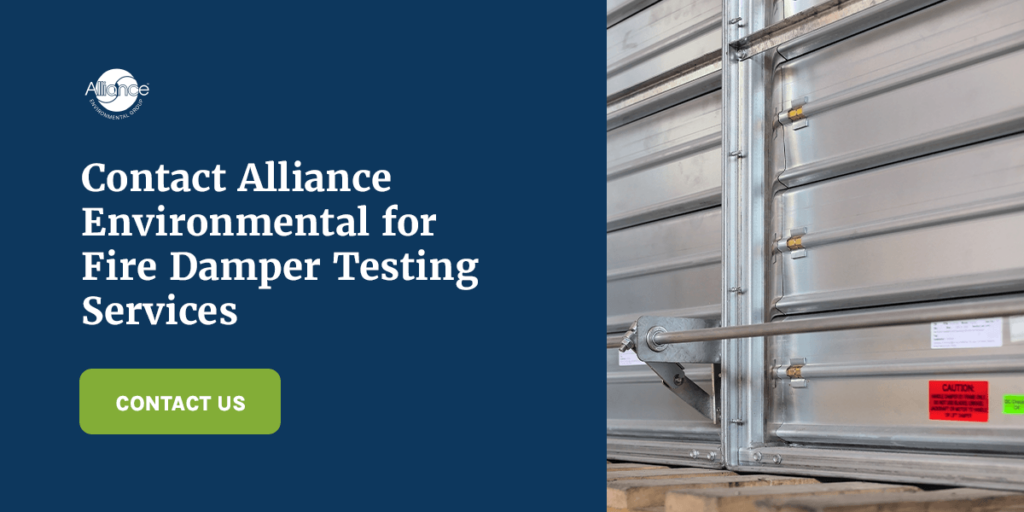AIRTEK
MINTIE
COAST ENVIRONMENTAL
PACIFIC HVAC
ARE NOW A PART OF THE ALLIANCE ENVIRONMENTAL GROUP!
New name, same great service – plus, an array of new service offerings!

A fire damper is an essential passive fire protection device that restricts the amount of damage a fire can cause. When a fire breaks out, the damper will automatically close to prevent the spread of flames and smoke.
Unfortunately, improper installation and lack of maintenance can cause serious problems to develop in a damper system — and many of these issues go unnoticed until there’s a fire or it’s time for an inspection. Taking proactive measures is essential for remaining compliant with key safety regulations.
Knowing what kinds of problems buildings frequently experience with fire dampers can help you prevent them from affecting your facility. Here are the five most common fire damper issues that cause structures to fail inspections.

Mistakes during the installation process can cause issues with damper function later on. Some of the most common examples of improper installation for fire dampers include:
Many of these issues are the result of unauthorized variations of installation requirements. If your installation crew needs to make changes to the rules for any reason, they should first receive approval from the appropriate jurisdictional authority. You must also obtain documentation of the approval to present at future inspections.
Rust can cause a damper to become stuck in the open position, preventing it from closing in the event of an emergency and putting building occupants at risk. Corrosion can also eat away at the metal in the damper, weakening it and leaving holes that can cause a malfunction.
Preventive maintenance and routine examinations are key for identifying and removing rust before it becomes a real issue. Working with a professional service can help you ensure a complete cleaning or replacement of parts.
In order to properly inspect a damper, the inspector needs to be able to manually open and close it. Inspectors often find that incorrectly installed dampers are difficult or impossible to access due to a range of factors.
Some of the reasons your damper may be inaccessible include:
Hiring a reliable installation crew is essential, as they can help you prevent many of the above problems. Look for a company that has extensive experience in your industry, and pay careful attention to any maintenance recommendations they provide. This advice will contribute to a longer life span for your damper as well as reduce the risk of failing an inspection.
It’s also common for facilities to have the wrong type of damper for their walls, which can impede the unit’s function.
The damper’s centerline should ideally be within the plane of the wall — meaning it aligns with your wall and does not jut out. If you have installed the wrong damper model, your retaining angle fasteners may get stuck in the damper track and prevent it from opening or closing all the way.
If your mount grille is flush with the wall on one side, you may want to consider installing an out-of-wall damper rather than an in-wall unit to ensure proper alignment.
Fire damper damage is one of the simplest issues on this list, and it’s one that can easily go unnoticed between inspections. Because you’ll typically only inspect your damper once every few years, a part could break or rust without your knowledge.
For example, the actuator is the component that provides the power for the damper to open and close. If this piece fails, it can prevent the damper from sealing shut during a fire.
Similarly, fire-rated fusible links are responsible for holding the damper open. If one breaks and you don’t replace it right away, the damper may not close when you need it to.
It can help to conduct more frequent small-scale inspections of your damper’s inner mechanisms. That way, you can identify problems that are likely to raise red flags in official evaluations and save some extra time and money later on.
The best way to solve fire damper problems is to take a proactive approach. Performing routine testing and maintenance will help you ensure your fire dampers are up to code and functioning properly at all times. It can also allow you to uncover issues early so you can repair them before your next inspection.
According to the fire code published by the National Fire Protection Association (NFPA), you should have your dampers inspected once after they first pass inspection and every four years after that. If you are in a hospital, the inspection interval changes to every six years. If you need to know where to find the relevant regulations for fire and combination dampers, NFPA 80 Section 19.4 and 105 Section 6.5 are great places to look.
It’s also important to pay attention to the fire safety regulations from the Occupational Safety and Health Administration (OSHA), as these guidelines are critical for keeping your employees and other building occupants safe.

If you want to make sure your fire dampers pass inspection, Alliance Environmental can help. We offer various fire protection testing services, including fire damper inspection and repair, so you can keep your building up to code. Thanks to our more than a century of combined experience, our team has the knowledge and skill to provide reliable, efficient service for businesses in virtually any industry.
Contact our experts online for more information, or fill out a quick form to request a free quote today.
AIRTEK
MINTIE
COAST ENVIRONMENTAL
PACIFIC HVAC
ARE NOW A PART OF THE ALLIANCE ENVIRONMENTAL GROUP!
New name, same great service – plus, an array of new service offerings!